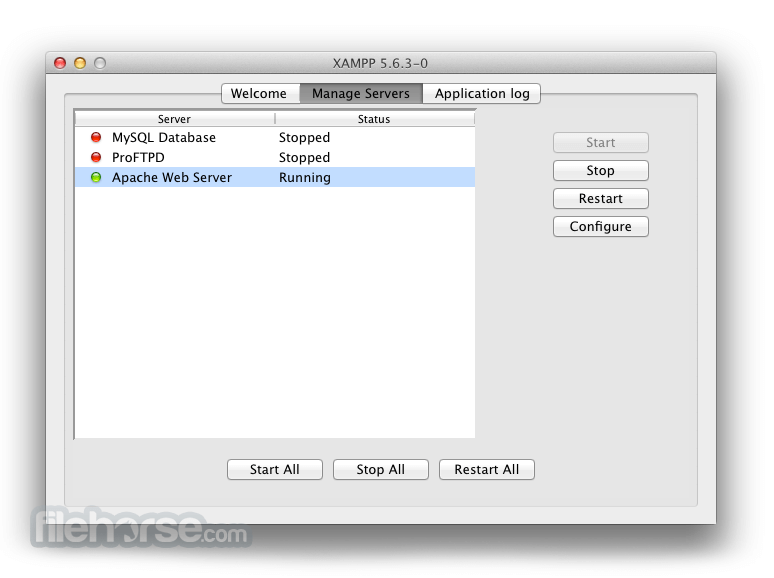Dozens of Bitnami open source applications can be quickly and easily installed on top of your XAMPP server or deployed in the cloud — for a broad range of use cases from blogs to ecommerce, business automation to eLearning. Download WordPress 5.5.1 Linux Linux / Windows Windows. Download Joomla! 3.9.22 Linux Linux / Windows.
Bitnami for XAMPP greatly simplifies the development of PHP applications on top of ApacheFriends XAMPP, by installing WordPress, Drupal with Drush, Joomla! and many more open source applications on top of XAMPP.
System Requirements
- Nov 19, 2015 Installing a local development environment with XAMPP in Mac OS is even easier than on a PC. All you need to do is download the.dmg file, open it, and either double click on the XAMPP icon or drag it to your application folder to install the program.
- Dec 18, 2019 To install WordPress locally, you need to move your downloaded files (unzipped) — including the new wp-config.php file — to XAMPP’s htdocs folder. You’ll find it here: Rename the folder if you’d like it to be called something other than “wordpress”.
Bitnami XAMPP modules require either XAMPP or a Bitnami LAMP, MAMP or WAMP stack already installed. They can be used with XAMPP (installer or zip file) v1.7.4 or later on Windows, v1.8.1 or later on Linux, and v1.8.2 or later on Mac OS X.
Bitnami for XAMPP works properly on top of the portable version. Due to application requirements, once you install an application, you cannot move or rename your XAMPP directory.
Installation
Bitnami XAMPP modules require either XAMPP or a Bitnami LAMP, MAMP or WAMP stack already installed. They can be used with XAMPP (installer or zip file) v1.7.4 or later on Windows, v1.8.1 or later on Linux, and v1.8.2 or later on Mac OS X.
Ensure that the XAMPP MySQL server is running before beginning module installation.
During the installation process, you will be prompted for the XAMPP installation directory. The default installation directory is typically C:xampp on Windows, /opt/lampp on Linux and /Applications/XAMPP on Mac OS X.
Bitnami for XAMPP modules require the MySQL root password to create the application databases. The default XAMPP password for the MySQL root account is an empty string. If you have changed this password, you will be prompted for it during the module installation process.
File Locations
Bitnami applications will be installed within your XAMPP installation directory, in the apps/ subdirectory. All the applications are configured with their files in the following locations:
- INSTALL-DIR/apps/APP-NAME/htdocs: Application files
- INSTALL-DIR/apache/conf/httpd.conf: Apache configuration file
- INSTALL-DIR/apps/APP-NAME/conf/httpd-prefix.conf (in previous versions, wordpress.conf): Apache configuration file for application

To access an application, browse to the URL http://localhost/APP-NAME. For example, WordPress will be accessible at http://localhost/wordpress. You can also access applications from the XAMPP welcome page, under the 'Applications' tab.
Credentials
Xampp For Mac Os X
Administrator credentials for each application are configured from the installer. The default username is 'user' and the password is the one configured during the installation process.
Graphical Manager
Since XAMPP v1.8.2-beta2, XAMPP for Linux and Mac OS X ship a new graphical manager, as shown below:
Xampp
You can also continue using the regular /opt/lampp/lampp script from the command line on Linux, as shown below:
Shell

Xampp Download
Some applications include a command-line scripting tool, such as Drush for Drupal. Access these command-line tools from the XAMPP Shell, included with XAMPP for Windows.
